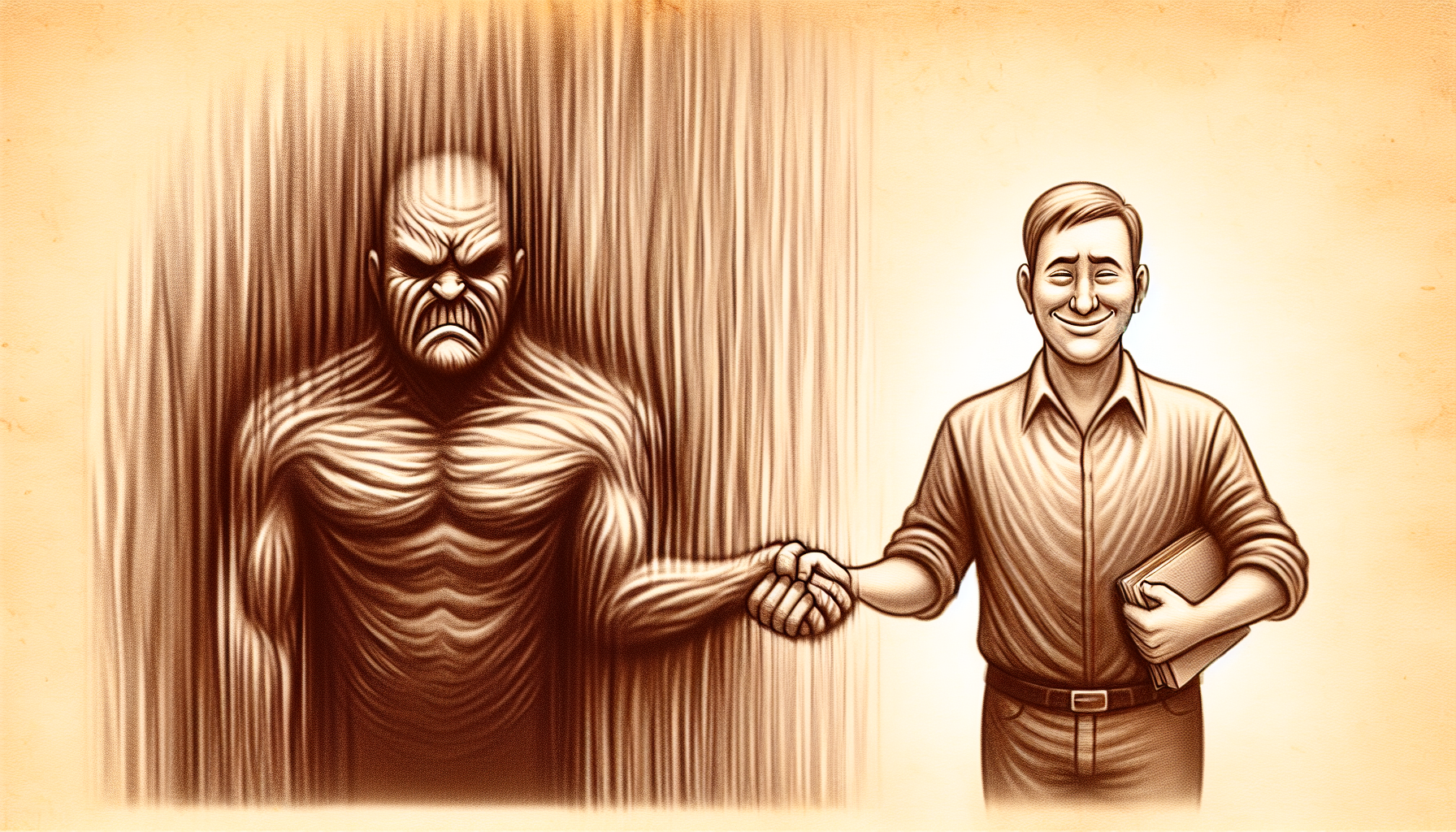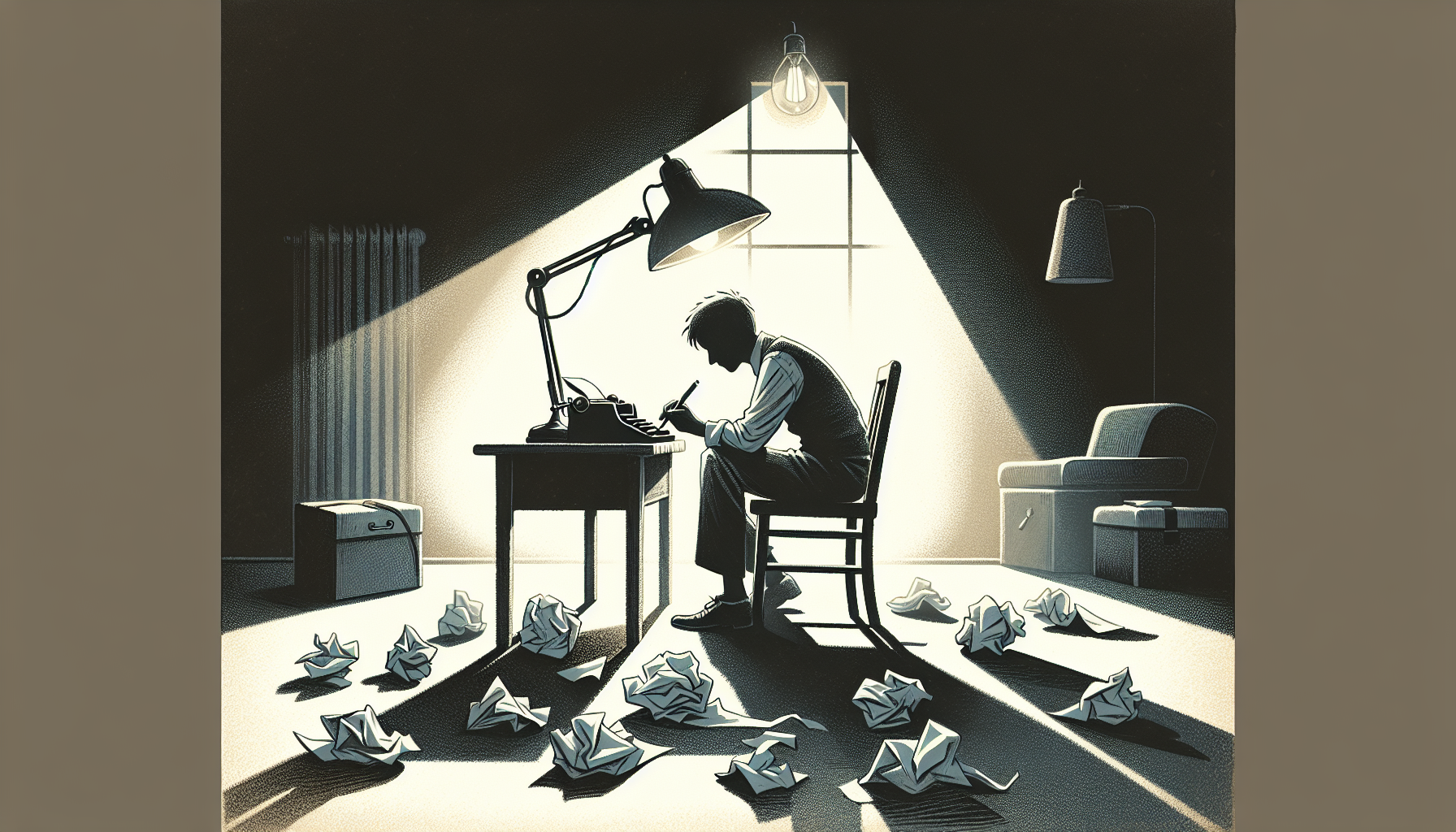11+ Creative Writing Topics to Spark Imagination and Engagement
When the blank page intimidates you, jumpstart your creativity with these 11 creative writing topics. From evocative scenarios to outer space diaries, each prompt offers a pathway to stir your imagination and guide your pen. Get ready to explore new terrains in storytelling without the lengthy preamble.
Key Takeaways
- Creative writing topics offer a range of scenarios to spark imagination, from transforming bullies and introspective solitude to otherworldly Martian diaries and chilling ice landscapes.
- These topics also include varied forms, such as narrative storytelling, thank you notes, complaint letters, and descriptive passages, to build engagement and writing skills.
- Sensory details, emotional journeys, and personal growth are central themes across creative writing topics, aiming to create narratives that resonate with readers and develop the writer’s abilities.
Mastering the Bully: Creative Writing Scenarios

Imagine the story of a bully, renowned for their intimidation tactics, who begins an unforeseen path toward change. Follow their transformation through a tale filled with struggles and techniques to overcome them as they shift from foe to friend, learning the value of empathy and moral clarity.
The theme presents an absorbing creative writing topic that captivates audiences by adding layers of complexity to the plot. As you craft this narrative, think about enhancing your skills through creative writing courses that delve into various themes such as redemption journeys and transformative experiences within creative writing.
The Solitude Spectrum: Crafting ‘Alone’

Imagine a solitary figure at the heart of a tale known as ‘Alone’, where the central theme is an exploration of seclusion and its effect on individual psyche and behaviour. In crafting this story, channel the essence of abandonment and alienation to illustrate how isolation informs the character’s introspective musings and their hidden desires for companionship.
In writing this narrative, let your words colour in all hues of solitude—ranging from profound sorrow to subtle traces of optimism.
Inferno’s Narrative: Describing ‘The Fire’
Employ the use of personification and sensory details, potent literary devices that infuse vitality into ‘The Fire’ as it hungrily extends its blazing tendrils to consume all within its reach. Craft a narrative so vivid that readers can sense the searing heat upon their flesh and inhale the acrid smoke filling their lungs.
Narrate the tale of the fire’s existence from its explosive inception through to its dwindling deathbed, ensuring you capture and convey the experiences of individuals enveloped by this voracious element.
Unboxing Imagination: Continuing the Cardboard Box Tale
Initiate your narrative with the line, “Outside my front door, someone had left a large cardboard box,” and weave an intriguing tale brimming with unforeseen twists. Title this captivating story “The Mysterious Cardboard Box.” This creative writing task for the 11 plus is designed to stimulate your child’s imagination as they delve into the enigmas hidden within its corrugated confines. Training for creative writing exams can be both enjoyable and educational when children are presented with assorted writing tasks like non-fiction write-ups that push them to develop engaging and well-structured stories.
Engage in crafting a suspenseful journey – what revelations does it conceal? Who might have placed it there? Use elements of suspense and curiosity to propel your narrative forward.
The Spiral Staircase: Delving into the Unknown

The spiral staircase twists into the dimness, beckoning your character to venture into obscurity. Employ stark contrasts between illumination and darkness to heighten the mysterious atmosphere and forge a sense of suspense that captivates the reader.
Initiate with an outstretched hand quivering at the threshold of an open portal, allowing the staircase to embody crucial turning points in your narrative as it coils deeper into a core filled with thrilling uncertainty.
Martian Chronicles: Diary Entry from Another World
Capture the transformation from Mars’ crimson terrain to Earth’s azure globe through writing a diary entry as if you’re a Martian chronicling your inaugural day on our world. Concentrate on:
- The vivid sensory impressions that would astonish someone not of this Earth
- The stark cultural disparities that might confound an interplanetary guest
- The sentimental odyssey embarked upon while encountering terrestrial life
Through your Martian protagonist’s notes, present a new perspective that delineates both the commonplace and the peculiar aspects of Earthly existence.
After Dark Adventures: Letter Writing with a Twist

How might one recount the unfolding events as night descends and stillness pervades? In writing a letter to a confidant, convey the tale of an excursion embarked upon under the cover of darkness. Fuse sensory perceptions and sentiments with the personal nature inherent in epistolary communication.
Illustrate through your writing how leaves whisper secrets carried by the wind, how a dog’s far-off call punctuates the silence, and how isolation wraps around you like a cloak. Impart those mysteries that seem reserved exclusively for nocturnal hours’ confidence.
Dawn’s Early Light: Capturing School Morning Solitude
Paint a picture of the tranquil moments preceding the bustle of an academic day. Illustrate:
- The quiet ambiance
- The contemplative musings that twirl through a person’s consciousness in preparation for what’s to come
- The deserted passageways
- The gentle glow of early morning light
Allow these components to construct a scene filled with still expectation and introspective meditation, centered around those brief thirty minutes when one has the opportunity to deeply engage with their own thoughts before school commences.
Chilling Scenes: Visiting the Ice-Cold
Transport your readers into a domain where the chill bites deep and frost-kissed vistas stretch endlessly. Paint with words the sensations of:
- sharp, icy blasts that cut sharply through the atmosphere
- the crisp sound of snow compacting beneath one’s steps
- the biting sensation on bare skin as brisk winds whip by
- the gradual loss of feeling in digits exposed to the relentless cold
Reveal through your storytelling, the severe splendour inherent in this frozen environment, captivating both sensory perception and feelings within your audience.
Tunnel Visions: Describing Darkness and Fear
The moment your character’s progression grinds to an unexpected standstill, they find themselves ensnared within the daunting gloom of a train tunnel, which swiftly becomes a testing ground for their terror. Portray the overwhelming feeling of entrapment, alongside the small glimmer of optimism ignited by a far-off gleam, and detail the mental struggle waged to keep hysteria at bay.
Craft a story where escalating anxiety and the combat with dread-induced claustrophobia clutch at the reader’s emotions relentlessly.
Memorable Encounters: Portraits in Words
Some individuals have a remarkable ability to etch themselves permanently into our memories, with their idiosyncrasies and routines shaping how we remember them. When describing such an unforgettable person, concentrate on the specific traits that distinguish them from others and elucidate why they continue to occupy your mind.
Their laugh might be uniquely resonant, their gestures particularly noteworthy, or perhaps it’s the profound influence they’ve exerted over you—use your words to craft a homage that captures the essence of their singular existence.
Facing Fears: Narratives of Courage
In this tale, you will portray a character grappling with their most profound fear—an ordeal that might immobilise them or drive them into decisive movement. Depict the physiological responses they encounter: perspiration beading on their forehead, the acceleration of their heartbeat, and the gestures that reveal their fright.
As your character confronts what terrifies them most, allow the story to delve into their valour and ensuing metamorphosis—from shaky hesitance to steadfast courage.
Frustration Flares: Expressing Annoyance in Writing
The story you tell encapsulates the spark and intensity of frustration caused by everyday vexations, portrayed with dynamic expressions and sharp words. Anchor your tale in a familiar setting such as a congested roadway or a bustling café, where you can craft the evolution of your character’s exasperation into something greater.
Consider tapping into your own moments of irritation to infuse realism and depth into your narrative, crafting an account that vibrates with true-to-life annoyance yet matures to exhibit personal development.
Pictorial Inspirations: Storytelling Through Images

Engage in the art of writing by employing image writing strategies to craft a narrative that eloquently encapsulates what a picture speaks, which is often said to be a thousand words. In roughly six or seven sentences, capture the essence of an image—its central element, the emotional response it elicits from you and the unfolding tale your imagination conjures.
As you refine your practice in writing, let the rich tapestry of sensory impressions and evoked memories act as muses guiding your hand. Describe vividly with words where silence reigns in still images. Breathe life into static scenes as stories blossom naturally under your pen’s dance.
Gratitude with a Twist: The Unwanted Gift Thank You Note
Showing appreciation, especially when the present isn’t to one’s liking, requires finesse. Your message of thanks elegantly traverses this tricky situation by recognising the giver’s kindness and subtly indicating that the gift didn’t quite match your preferences.
Initiate a dialogue about the story surrounding the gift in an effort to discover shared interests and strengthen the connection with those who gave it.
The Interviewer’s Mindset: Crafting Questions
As an interviewer, craft queries that probe into the candidate’s ambitions and capabilities. Inquire about their professional objectives, inherent aptitudes, and compatibility with the position to determine if they resonate with the organisation’s purpose and principles.
Factor in discussions on remuneration to confirm that both parties have congruent expectations regarding compensation.
Uniform Discontent: Voicing Opinions in a Complaint Letter
Your discursive magazine article carefully presents a measured critique of the school uniform policy, blending facts with considered emotion to respectfully articulate objections. It specifies problems associated with the policy and proposes practical solutions while preserving a tone that is both professional and free from personal attacks.
My Town, My Pride: Promotional Leaflet Writing
Celebrate the distinctive characteristics and local enterprises that make your hometown special by featuring them prominently in a brochure designed to extol the virtues of your town. Ensure it is adorned with captivating images and compelling text that truly reflects the spirit of your locality.
Emphasise the dynamic role played by homegrown businesses in bolstering the local economy, underscoring how crucial mutual support is within the community.
Holiday Blues: Crafting a Diplomatic Thank You Letter
Although a vacation may have its letdowns, it can nevertheless provide instances of happiness and education. Your letter of appreciation skillfully balances the act of showing thanks while recommending enhancements for subsequent visits in such a way that it avoids offending.
Veterinary Ventures: Complaining with Class
Should an adverse event occur at the veterinarian’s office, it is imperative that you communicate your issues both clearly and politely. The letter you compose should detail the problem, propose possible solutions, and courteously call for a reply, thereby encouraging a milieu of professionalism and mutual respect.
Toast Tutorial: Simple Instructions with Flair
Transform the ordinary act of toasting bread into an enthralling tale for children. Lead them on a delightful escapade where every instruction paves the way in their adventure toward crafting that perfect slice of golden toast, using clear guidance and playful anthropomorphism at each stage to make it an engaging element of the story.
Room with a View: Environmental Descriptions
Bring to life the environment that surrounds you by weaving a detailed sensory narrative. Describe:
- How light and shadow delicately dance across the room
- The various textures that embellish the area
- How the ambience connects with the character, uncovering their deepest emotions and reflections.
Cherished Bonds: Describing Significant Others
The landscape of our lives is crafted by the cherished traits and common experiences we share with those closest to us. Describe the emotional breadth that spans from instances of affection and irritation to the deep bond which characterises this unique relationship.
Animal Affection: Pet Portraits in Prose
Your writing effectively encapsulates the unique essence of pets, which occupy cherished positions within our hearts. It articulates with both affection and attention to detail not only their physical attributes but also the emotional connections they establish with us. Describe each pet’s distinctive quirks and pleasures that render them irreplaceably treasured.
Summary
Our journey through creative writing topics is a testament to the power of words and the imagination’s boundless territory. Each topic we explored is a stepping stone toward mastering the art of storytelling, from the transformative arc of a bully to the tender portrait of a cherished pet. Embrace these challenges, and let your pen lead you to new realms of creativity and expression.
Frequently Asked Questions
How can I develop a character arc for a bully in my story?
When creating a bully’s character arc in your story, concentrate on their personal struggles and their capacity for ethical development. Demonstrate how they conquer hurdles and convert their detrimental characteristics into beneficial ones.
Doing so will allow the bully to gain important insight and progress as a figure within the narrative.
What are some effective ways to describe a solitary environment in creative writing?
In the realm of creative writing, when aiming to depict a solitary setting, one should harness vivid language and demonstrate the character’s actions that embody their sense of seclusion while delving into their personal introspection concerning their solitude.
Such strategies are instrumental in engrossing the reader within the ambience of isolation.
How can I make a scene with a fire more immersive?
In order to enrich the narrative and craft a more compelling experience for your reader, it’s essential to animate the scene involving a fire by tapping into all five senses in your descriptions. By personifying the fire, you can breathe life into it, thereby intensifying immersion within the story or performance.
What are some tips for writing a compelling diary entry from a Martian’s perspective?
Focus on capturing the unique sensory encounters and the striking cultural differences a Martian observes on Earth when writing an engaging diary entry, highlighting the process of adaptation and the freshness of their experiences.
How do I write a thank you note for an unwanted gift without offending the giver?
You can write a thank you note for an unwanted gift by expressing appreciation for the thought behind it and mentioning any unique aspects, such as its hand-made quality. Inquire about the story behind the gift and diplomatically suggest how you might use it or the joy of receiving it.







